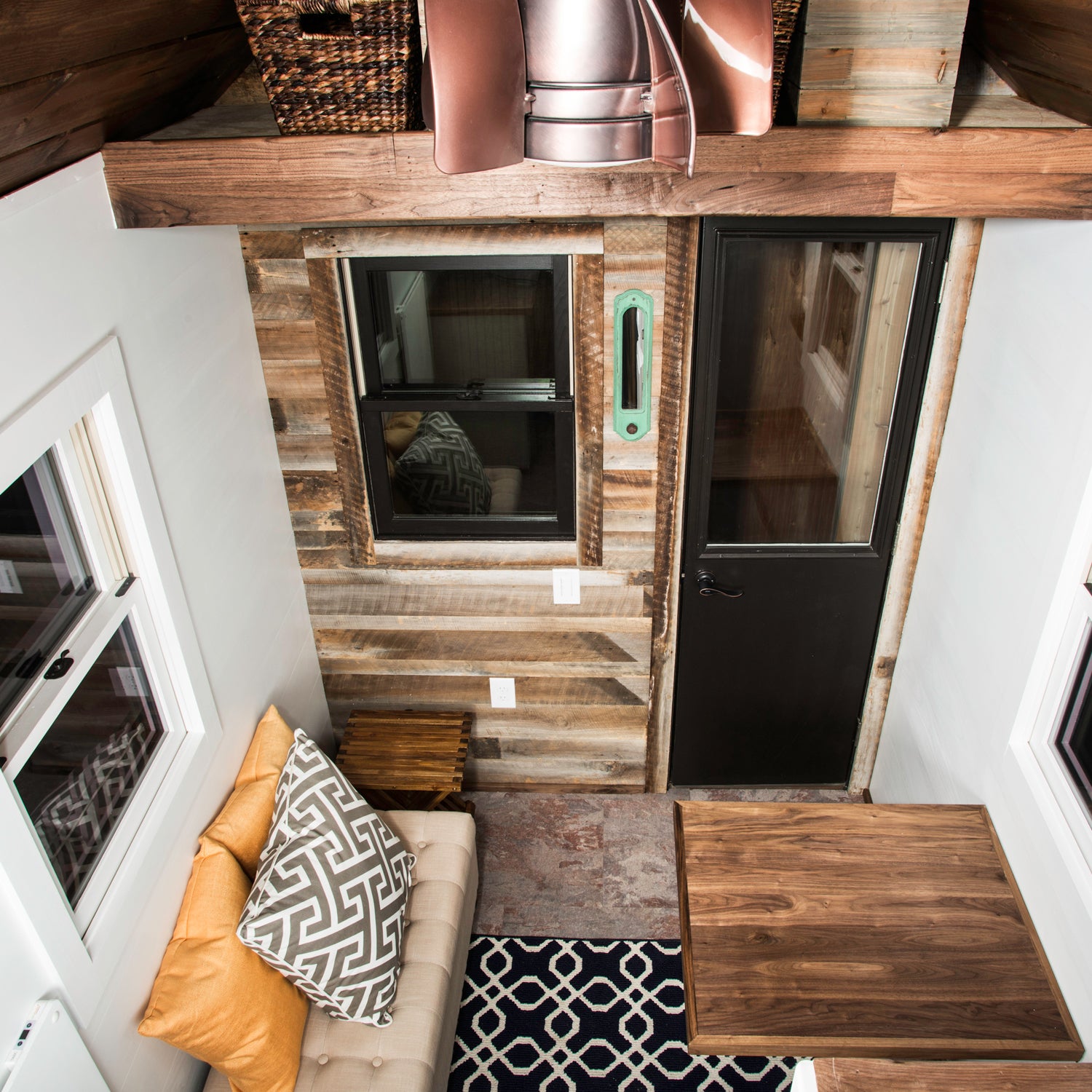We love tiny houses almost as much as we love camper vans, and for many of the same reasons: low overhead, high DIY potential, maximum portability,┬áand minimum fuss. As the movement matures, would-be tiny-house owners are pressuring legislators to broaden the definition of a legal dwelling,┬áleading to a number of not-so-tiny construction opportunities. In places like Los Angeles and Oregon, tiny houses are helping to . In Michigan, soon you may be able to build a tiny house near your primary residence for a . And in Colorado, developers are pushing for entire subdivisions of tiny homes.╠ř
The tiny house movement is teetering on the edge of Big Business, and a recent development may tip the scales. The largest privately held supplier of building materials in the United States, , is officially stepping into the tiny-house market. The construction giantÔÇÖs new collection consists of four compact models ranging from classic to contemporaryÔÇöall under 200 square feet.╠řÔÇťThis movement is more than a passing fad,ÔÇŁ explains Becky Mancuso, vice president┬áof marketing and PR at 84 Lumber. ÔÇťAs a company, we sit at the intersection of green building materials and construction expertise, so we felt that we were uniquely positioned to enter the market.ÔÇŁ
ÔÇťFrom enthusiasts to people who just want to learn more, everyone┬áthinks itÔÇÖs cool that a national retailer is paying attention.ÔÇŁ
84 Lumber wants to stay true to the spirit of the tiny houses,┬áparticularly when it comes to the DIY aspect. Each of the four models is available in three distinct packages, and the bare-bones Build Your Own┬áoption, which starts at just $6,884, is simply a set of blueprints, a materials list,┬áand a custom steel trailer upon which to build your tiny house. (The trailer includes a subfloor and leveling jacks.)┬áPurchasing this package isnÔÇÖt much different than starting from scratch, except you get to jump right into the fun part.
As you get into the higher-end packages, price goes up while labor intensity drops. The Semi-DIY┬ápackage (from $19,884) is a shelled-in tiny house complete with windows, door, shower, and trailerÔÇöall you do is add your own finishing touches and exterior. Finally, thereÔÇÖs the Move-In Ready┬ápackage (from $49,884), which arrives 100 percent┬áconstructed on the back of a shiny new trailer like an overgrown dollhouse on Christmas morning.
ÔÇťWe only just announced the Tiny Living collection, but so far the DIY and Semi-DIY packages have attracted the most attention,ÔÇŁ says Mancuso. ÔÇťWe think this speaks to customers really wanting to customize.ÔÇŁ
The 154-square-foot Roving model was unveiled first, and the amenities in the Move-In Ready package are downright drool-inducing: reclaimed-wood doors, walnut countertops, cork flooring, Energy Star fridge, stainless-steel sink, designer faucet, LED lighting, composting toilet, and an energy-efficient wall heater that uses 70 percent less electricity than standard room heaters. Like the other models, the Roving is designed to work with standard electrical and water hookups. Solar and rainwater options are coming soon.
You might wonder: What does this mean for the tiny-house movement? Considering thereÔÇÖs a tiny-house reality show in its third season, it isnÔÇÖt like minimalist living is some secret waiting to be spoiled. And unlike fixed-gear bikes, thereÔÇÖs very little risk of getting struck and killed by a rookie tiny-house owner,┬áalthough youÔÇÖll want to take care while towing it around. If you ask us, lowering the barrier to entry for tiny-house ownership is a good thing. As more people enter the market, lawmakers will continue to reexamine zoning restrictions, and it will likely become easier to build (or buy) the tiny house of your dreams.╠ř
ÔÇťWeÔÇÖve had inquiries from all over the world,ÔÇŁ says Mancuso. ÔÇťFrom enthusiasts to people who just want to learn more, everyone seems to think itÔÇÖs cool that a national retailer is paying attention.ÔÇŁ


